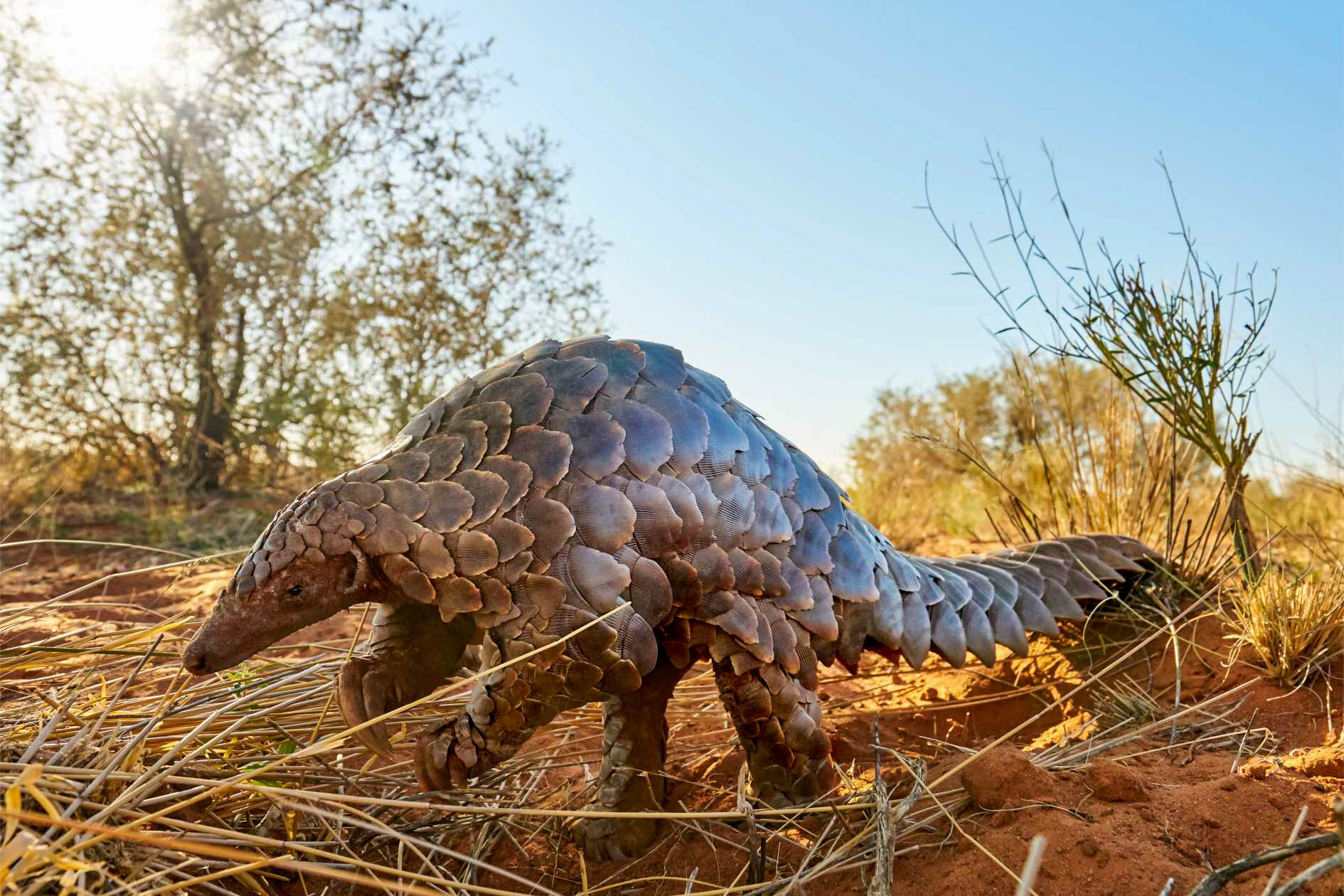I decided to support pangolin conservation because of a story about them that broke my heart. It triggered my curiosity towards the species and I fell in love with them but I had to wait a year and a half before seeing one with my own eyes.
In November 2016, my adventure took me to Uganda for the first time. There, I visited a school and orphanage project. During my time there, I also had the opportunity to see the magnificent wildlife in this country, including chimpanzees and mountain gorillas.
Upon returning back to the UK, I spoke to someone who told me he witnessed the arrest of a pangolin poacher. The poor pangolin was extremely dehydrated and in a dreadful condition. At that time, I knew little about pangolins, their endangered status and how difficult it was to care for them in captivity. I kept in constant contact to follow the progress of its rescue and next steps.
It turned out that there was nobody available to pick up the pangolin and transport it to a rescue centre. The only available vehicle was on the other side of the country, busy with another rescue. On the second day, the pangolin was eventually brought to a zoo. There, a vet took care of it. It started to perk up a little, only to sink back to a lethargic state.
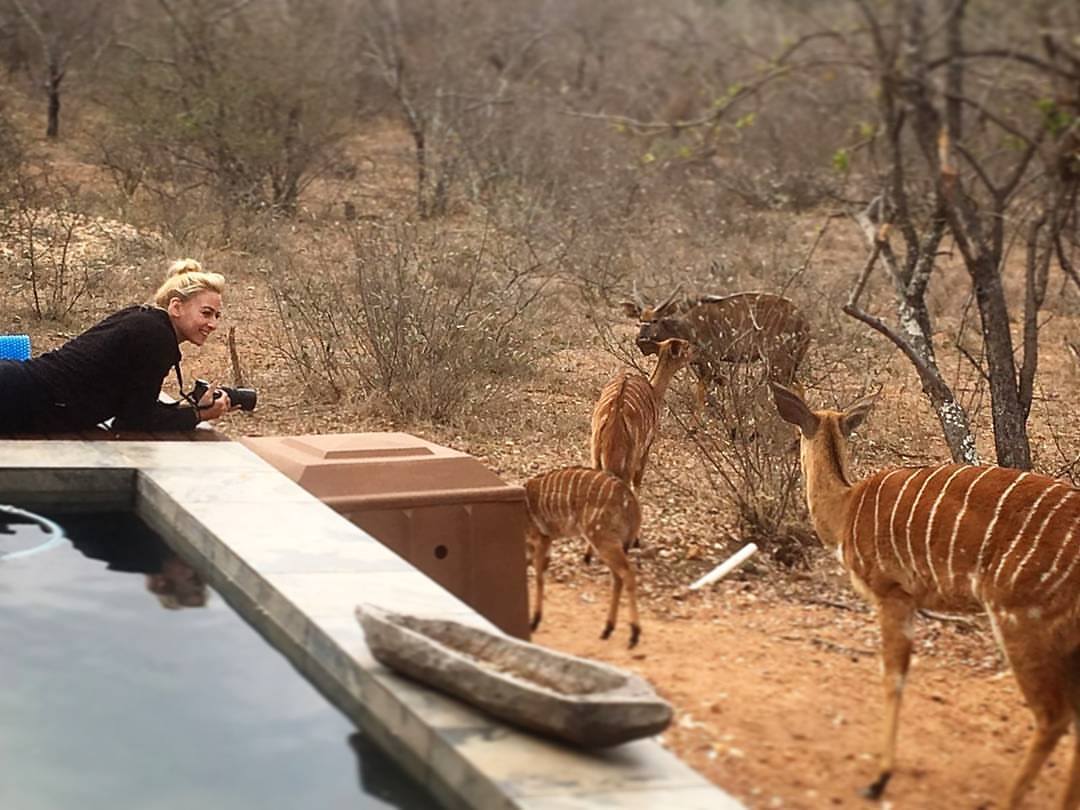
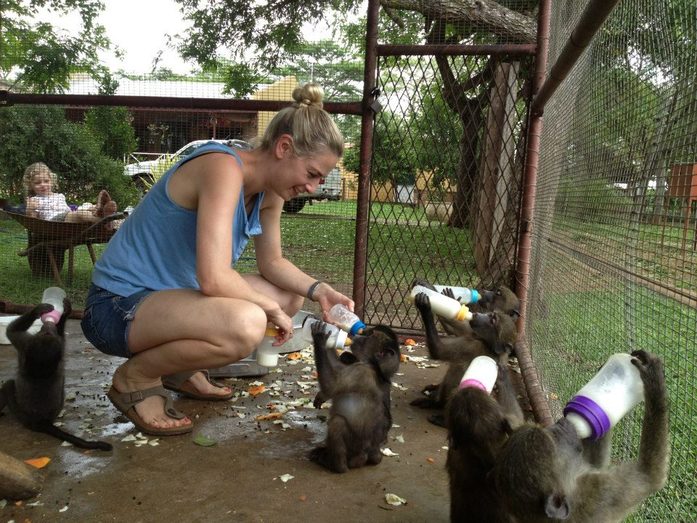
IMAGE LEFT: Geraldine’s trips to Africa, volunteer work and encounters with wildlife (here in South Africa), intensified her love for all things wild. | © Geraldine Morelli
IMAGE RIGHT: Geraldine and her daughter visit a primate center in South Africa. Wildlife conservation, rehabilitation and release are at the forefront of Geraldine’s charity work. | © Geraldine Morelli
On day three, the pangolin died. I was extremely upset. I simply could not believe that there was no way to save these poor animals. I questioned how many pangolins had been knowingly rescued in the country and how many had survived. I will never forget the answer: 15 rescued pangolins, 15 deaths. This is what triggered my anger and willingness to help them.
A small team of people from Uganda, Zimbabwe and myself came together organically to discuss the next steps. I contacted the Tikki Hywood Trust, as they are the leaders in pangolin conservation in Africa. Knowing that they develop a pangolin rescue and rehabilitation network across Africa, I put them in touch with the Uganda Wildlife authorities. They trained them to rescue pangolins, increasing their chance of survival.
Since then, it has been one of my missions to raise awareness about pangolins and look for projects to support them.
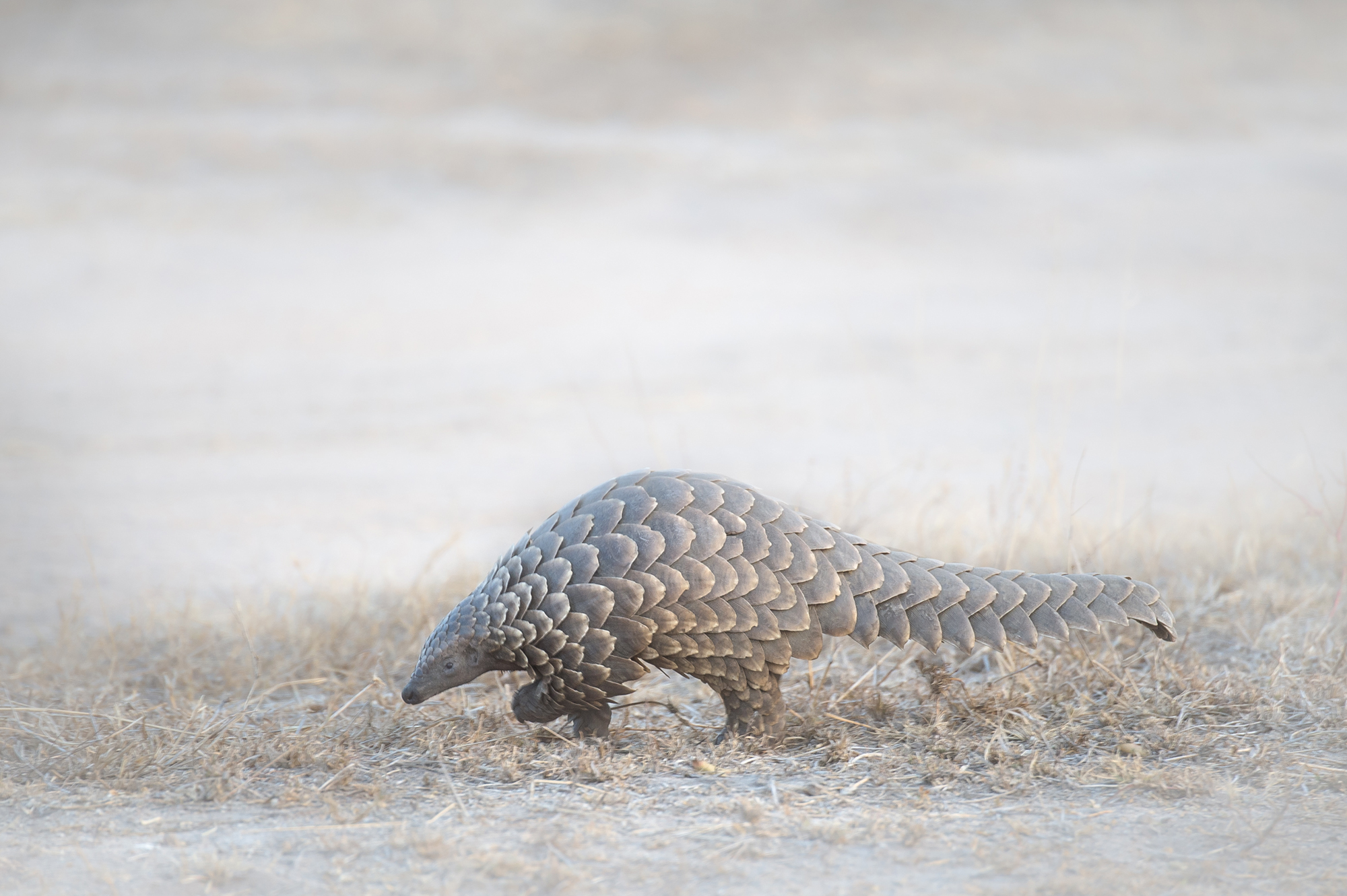
IMAGE ABOVE: A pangolin is still poached every 5 minutes, while 125,000 pangolins are illegally traded each year. | © Shutterstock
The Most Trafficked Mammal in the World
There are eight species of Pangolins spread out over Africa and Asia. The Sunda, Chinese, Philippine and Indian pangolins inhabit Asia. The white-bellied, black-bellied, ground, and cape pangolins are found in Africa.
All pangolin species are victims of such horrendous injustice and cruelty. The thought itself breaks my heart every time. Pangolins are greatly threatened by poaching, serving for both food consumption and as traditional medicine.
Pangolin meat is seen as a delicacy. Meanwhile, the powder made by grounding their scales is believed to have medicinal properties. Hence, it is used in traditional medicine, believed to cure many diseases and physical weaknesses. Of course, none of this is proven. Yet, a pangolin is still poached every 5 minutes, while 125,000 pangolins are illegally traded each year. Sadly, this has attributed the pangolin the title of “the most trafficked mammal in the world”.
More information on www.wildnfree.org/species
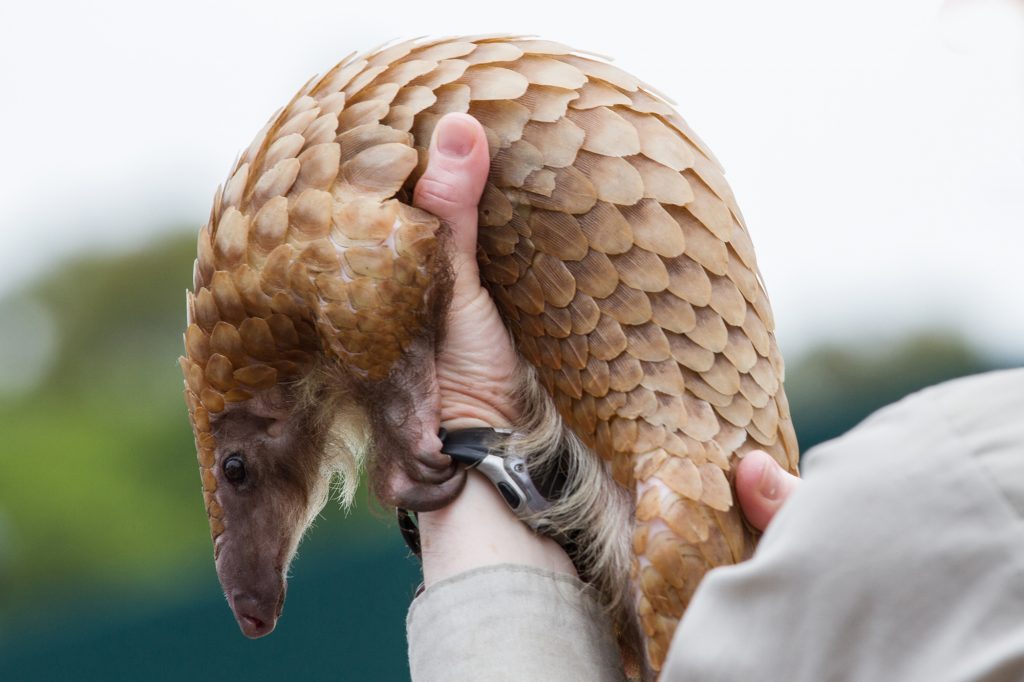
IMAGE ABOVE: Pangolins are greatly threatened by poaching, serving for both food consumption and as traditional medicine. | © Shutterstock
Creating Wild & Free - Rehabilitation and Release
When I founded Wild & Free – Rehabilitation and Release in October 2014, my initial objective was to identify successful primate rehabilitation centres, fundraise for them and raise awareness about their work. Frequently, rehabilitation centres as such are not supported by the government or any official entities. Yet, their work is crucial to saving primate species. Nowadays, 60% of primates around the world are endangered and 75% are declining in numbers.
As the charity developed, so did my projects. Increasingly, I began to choose rehabilitation centres that I considered “unsung local heroes”. These centres are usually unknown to many people. Yet, the work they do is incredible. At times, I also select centers based on species that are rather unfamiliar or unheard of.
Having selected a centre, I discuss its principal needs with the director. Thereupon, I set out to raise funds towards a specific target. Once the target is reached and donations are sent, I continue to support the centre.
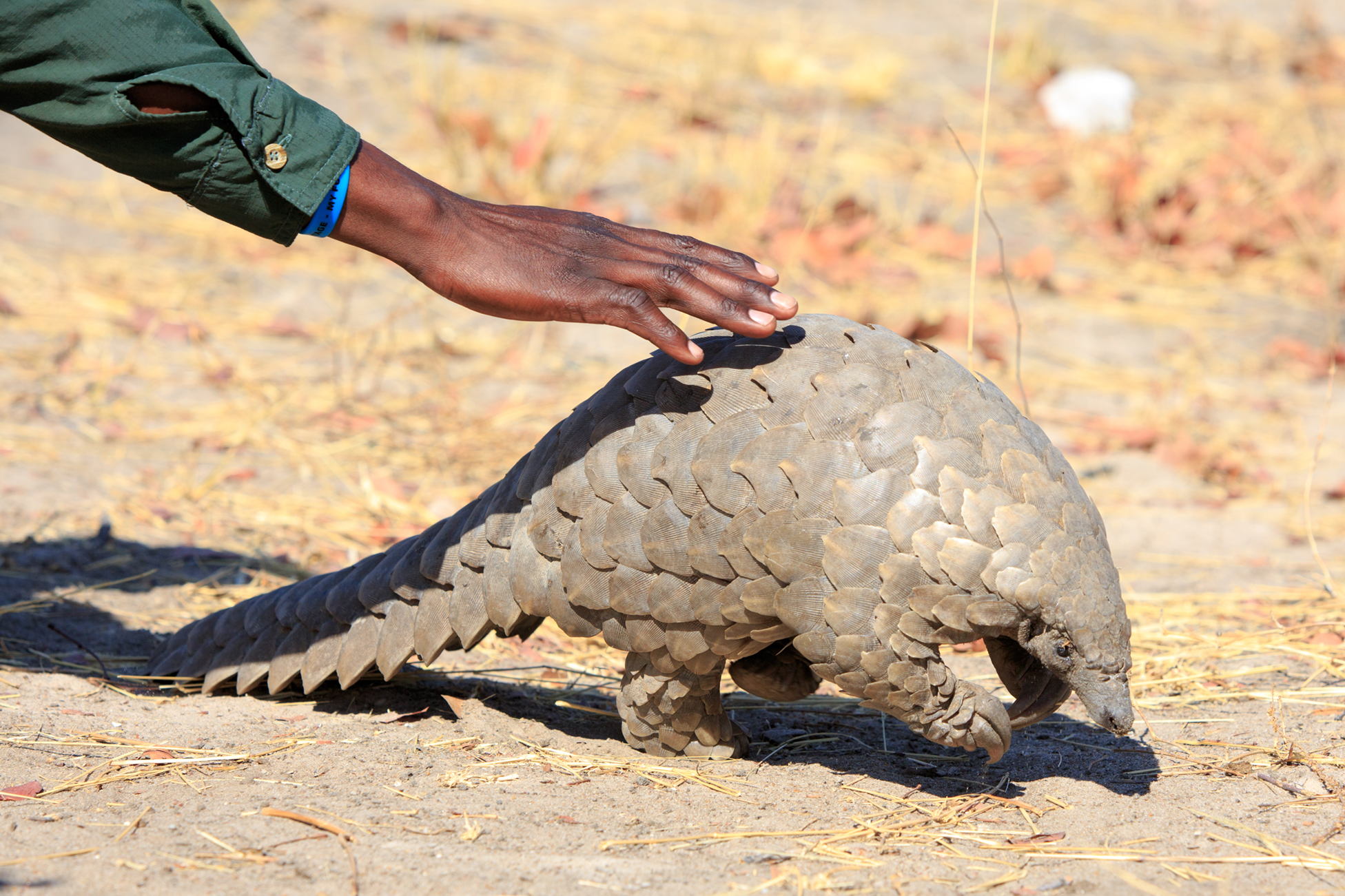
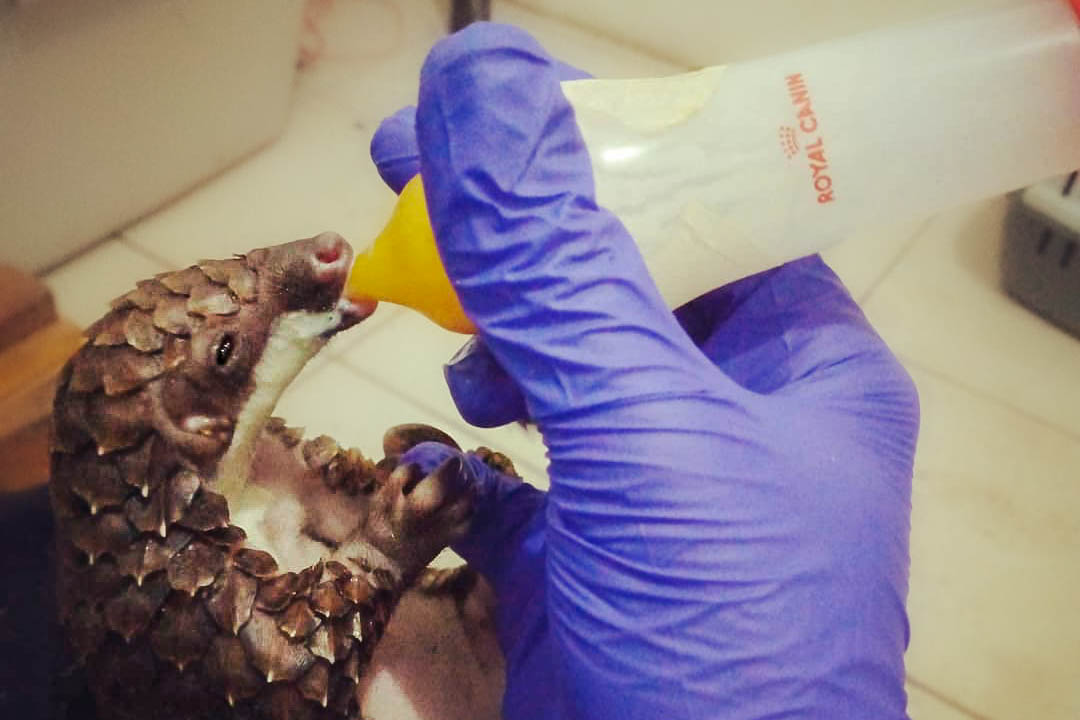
IMAGE LEFT: All the centres Wild & Free helps continuously need funding. There are many hazardous situations, unplanned costs, etc. | © Shutterstock
IMAGE RIGHT: Bottle-fed baby pangolin rescued mid-November 2020. | © LiWiSa
All the centres I help continuously need funding. This is the reality of working with wildlife 24 hours a day. There are many hazardous situations, unplanned costs, and so much more that needs taking care of. By helping smaller centres, I can maximize my fundraising capacity and ensure that every donated penny goes a long way in the targeted countries. At Wild & Free, 100% of donations raised for a project go to the beneficiaries.
When working with rescue centres, my position is to let the experts – i.e the local organisations – lead their activities. I support them by raising funds, promoting awareness and highlighting their work. Sometimes, a centre has a very specific project they need help with. For example, a pangolin release, or specific monitoring equipment that needs to be purchased. At other times, they just need to cover the costs of a long journey to rescue anywhere between one to one-hundred pangolins. Every life counts!
It is really important to me to visit each centre I support. When I visit a centre, I see its passion, efficiency, dedication, successes, struggles, and all of its programs firsthand. A few of these include: educating the next generation with school visits from around the country, cooperating with wildlife authorities to rescue the animals, poacher arrests, snare removal, etc. This not only helps me to understand how the centre operates, it also immensely grow my admiration and determination for wildlife rescue even more.
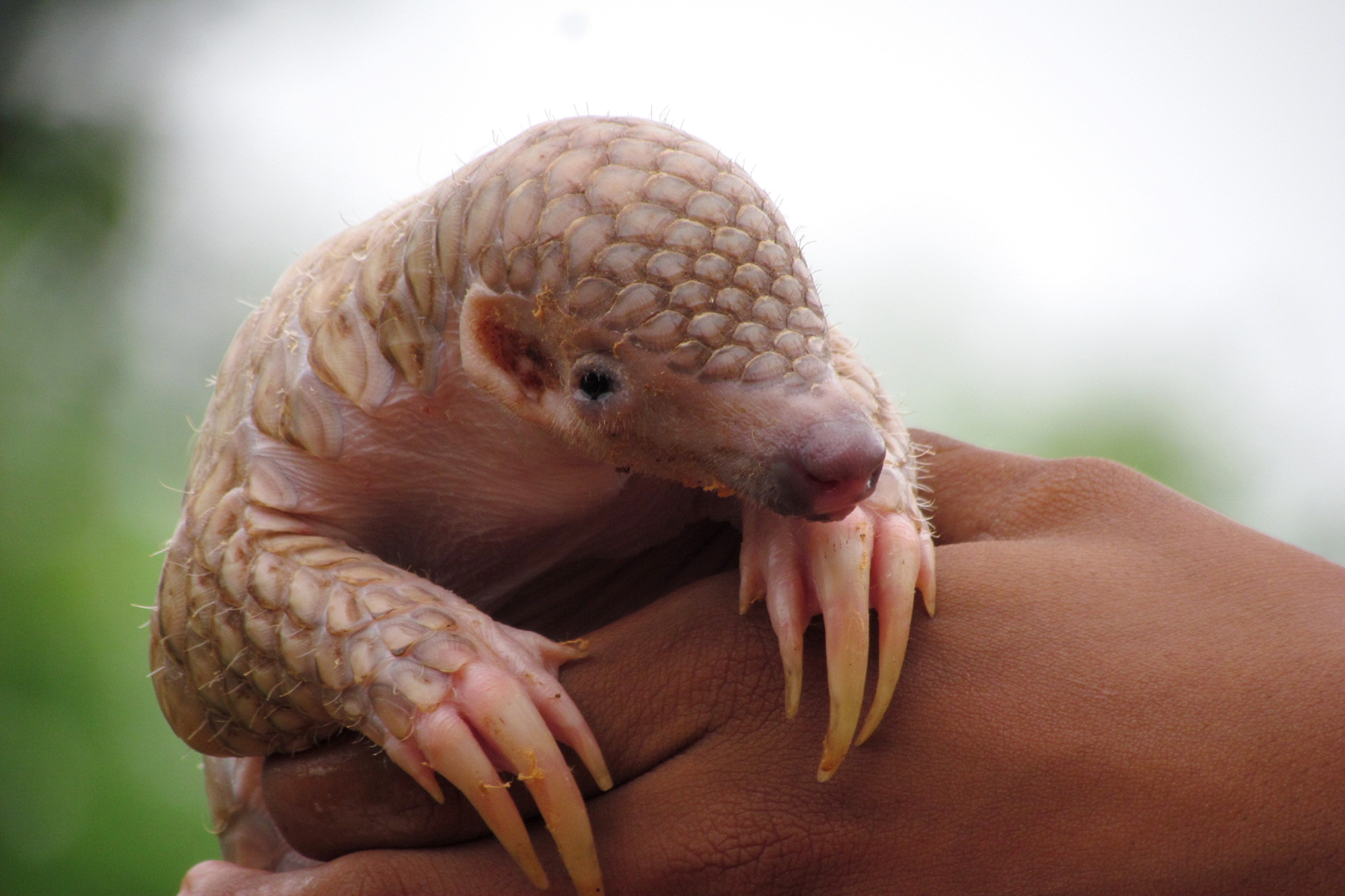
IMAGE ABOVE: When working with rescue centres, Wild & Free lets the experts – i.e the local organisations – lead their activities. They support them by raising funds, promoting awareness and highlighting their work. | © Shutterstock
First Encounters at Save Vietnam’s Wildlife
With Wild & Free, I support two pangolin species in Asia and two species in Africa, rescued in the rehabilitation centres Save Vietnam’s Wildlife and LiWiSa.
The first rehabilitation centre I started to work with was Save Vietnam’s Wildlife. There, I also had my first face-to-face pangolin encounter. Even though it was in captivity (as it had been rescued), I felt so emotional. I had the opportunity to briefly touch its baby pink, soft belly. Closely looking at its little feet, scales, and eyes, I completely fell in love with this unique species.
Everything about pangolins is fascinating - they are so gentle and innocent, yet savagely decimated for no reason at all!
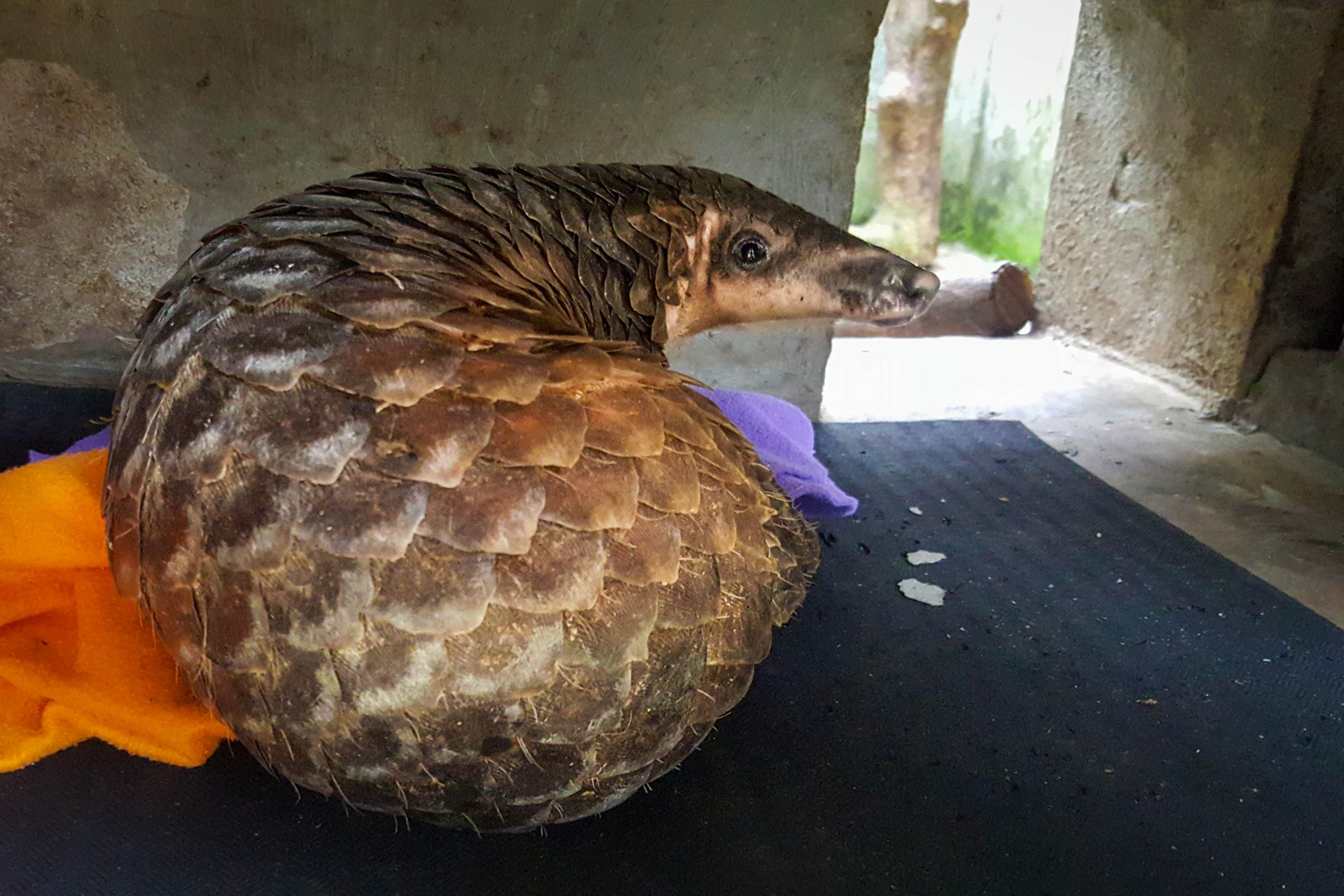
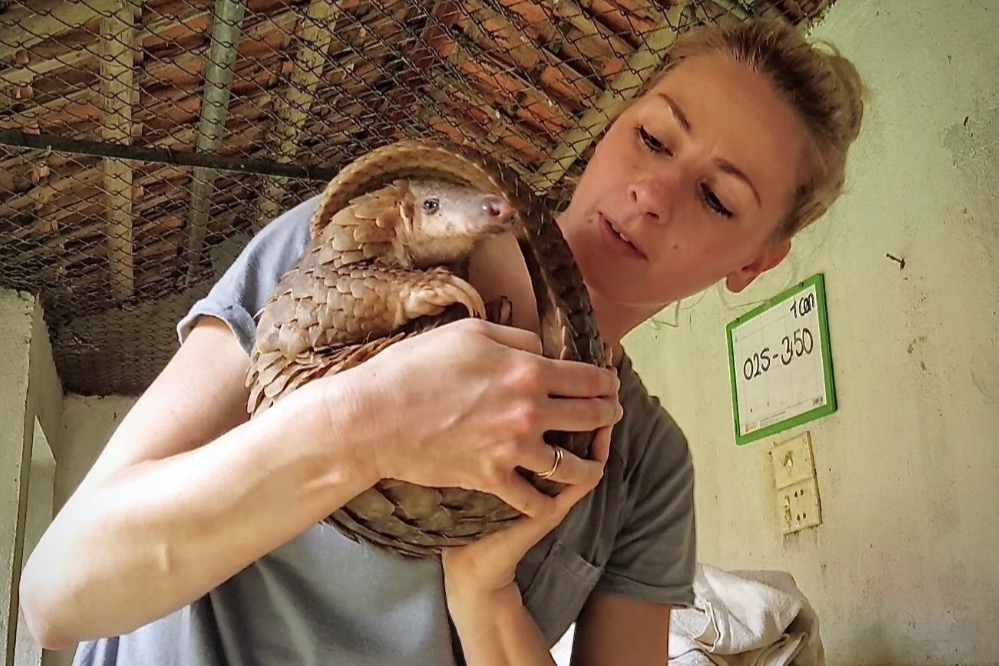
IMAGE LEFT: Sunda Pangolin in quarantine at Save Vietnam’s Wildlife, shortly before it was released. | © Geraldine Morelli
IMAGE RIGHT: Geraldine encounters a pangolin at Save Vietnam’s Wildlife centre. | © Geraldine Morelli
Working with Libassa Wildlife Sanctuary
The second pangolin rescue centre I support is Libassa Wildlife Sanctuary (LiWiSa) in Liberia. LiWiSa is the only wildlife rescue centre in the country. Apart from Chimpanzees, they rescue many different types of wildlife, including pangolins. Among pangolin species, their rescue focuses on two critically endangered species: the white-bellied and the black-bellied pangolin.
When possible, LiWiSa rehabilitates and releases all of their rescues back into the wild. However, working as a very small team, the centre was immensely impacted in light of COVID-19. Hit by a lack of donations (from visitors and volunteers), my target was to raise funds to cover 3 months of food for over 100 animals in their care.
Like all projects, I am still helping them in the future fundraising efforts. Hence, my campaign is still running on GoFundMe. They are rescuing many animals at the moment and really need all the help they can get. Among many rescues, they just received a baby pangolin mid-November – another victim of the illegal wildlife trade.

IMAGE ABOVE: Temminck’s Pangolin thriving in its natural habitat, wild and free as it should be. | © Tswalu Private Game Reserve
Fundraising with Creativity
At the risk of sounding too sensational, I think that everyone needs to fall in love with pangolins to want to protect them. It then becomes more natural to raise awareness by sharing news about them.
Wildlife photography is one way to invite people to encounter wildlife and ideally inspire them to protect a species. However, not everyone looking at a beautiful photograph has a deep desire to protect the animal in question. Personally, I believe that wildlife photography needs to provoke an emotional connection between the viewer and the subject in order to incite meaningful action. It starts with an image and is accompanied by the story.
In other words, the photograph needs to shock and pull a heartstring: something incredibly cute, something never seen (behaviour/animal), something emotional (happy or sad).
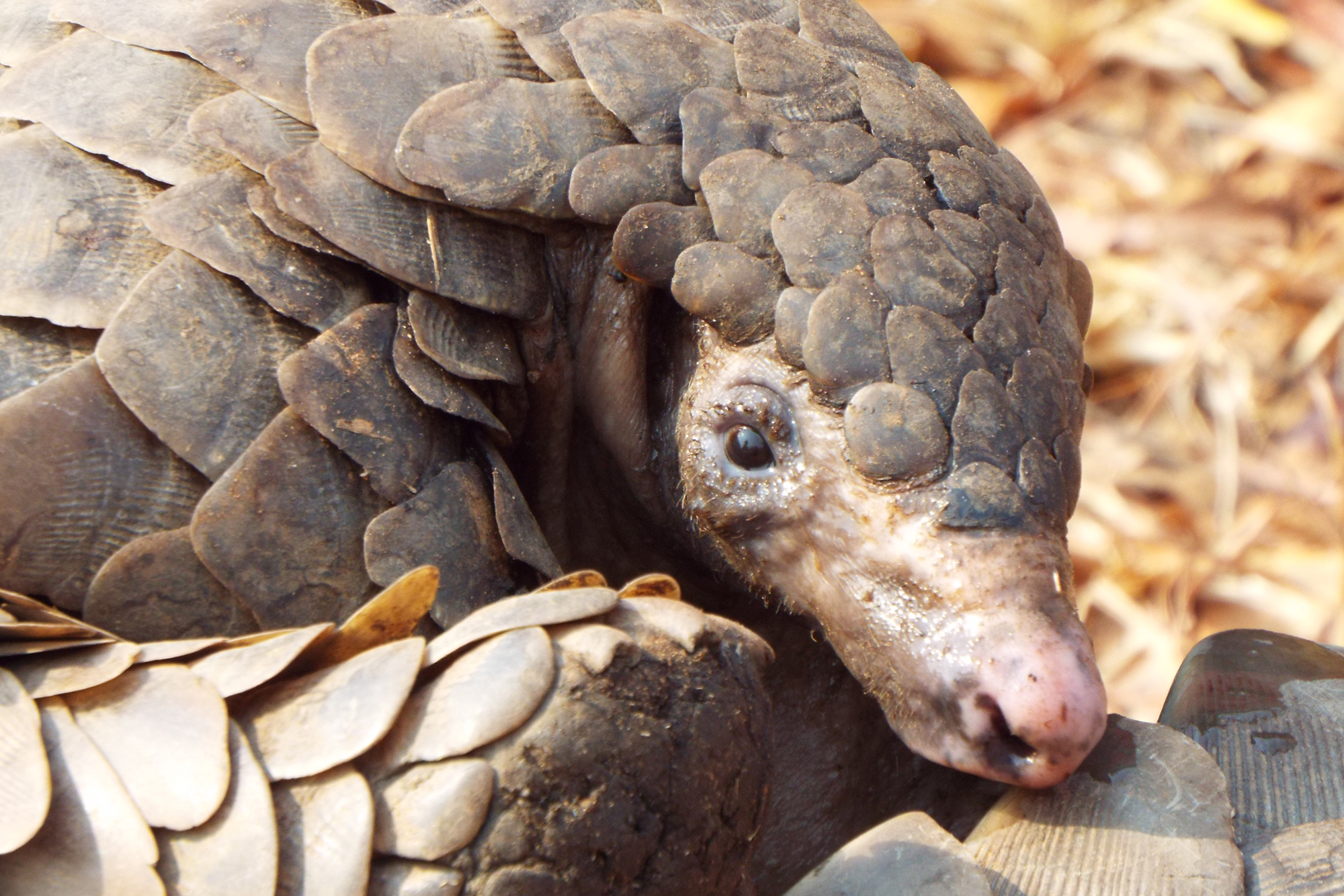
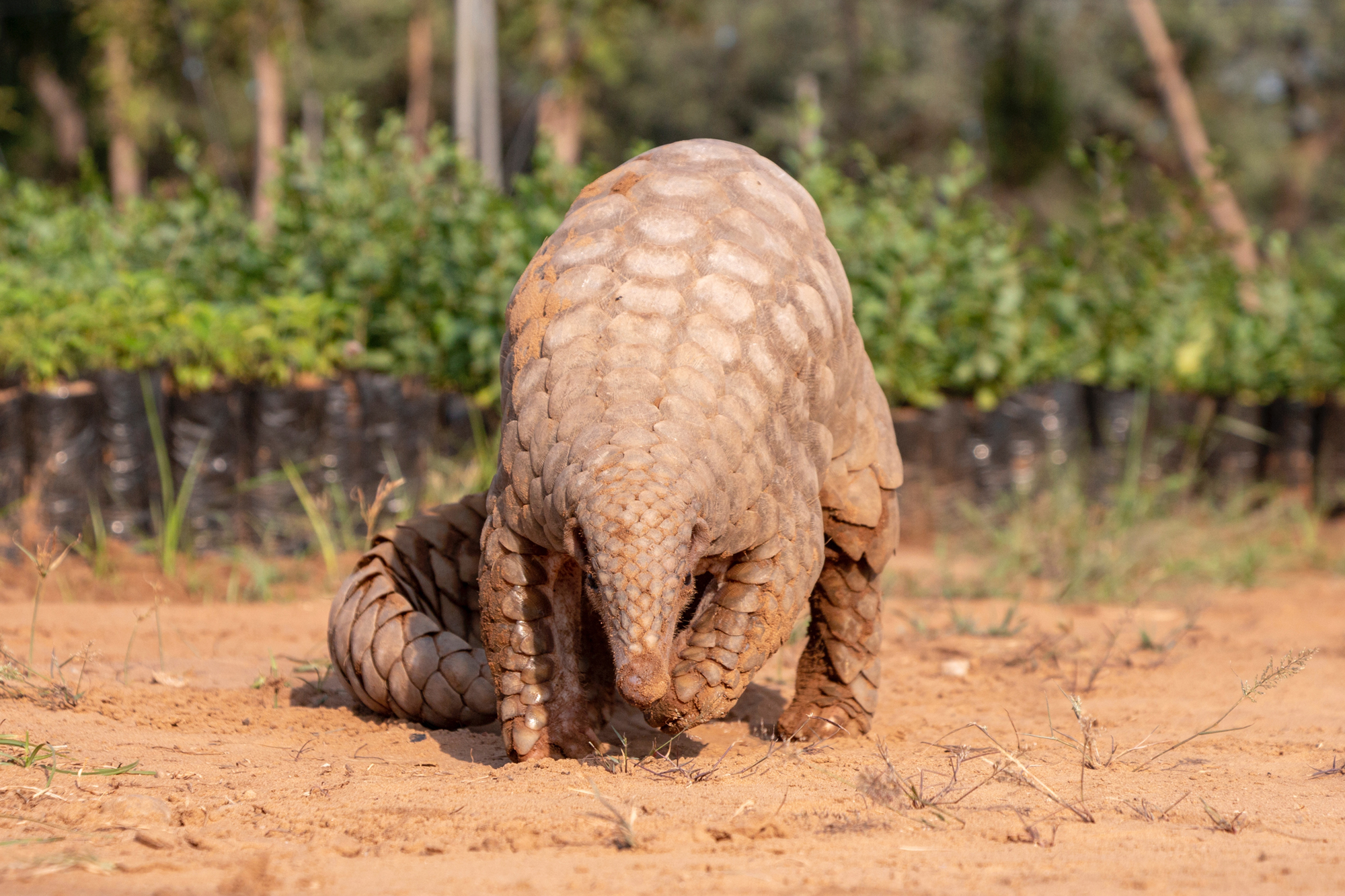
IMAGES IN ORDER OF APPEARANCE: The number of pangolins left in the wild is unknown. Sadly, the only figure available is the number of deaths (top | © Shutterstock) | Geraldine’s first pangolin sighting was of a rescued one, at Save Vietnam’s Wildlife’s centre (bottom | © Geraldine Morelli)
Individual and Collective Actions Matter
At the time of writing, the number of pangolins left in the wild remains unknown. Sadly, the only number we have to work with is the staggering figure of deaths per year. As pangolins have greatly declined in Asia, they are now transited from Africa, consequently resulting in a decline there. However, my aim is to remain positive that we can do something to conserve this unique species.
As the root of the issue is predominantly linked to Asian countries where we have little impact, every bit helps to support those on the ground fighting for pangolins. Supporting pangolin conservation via Wild & Free or organisations who are protecting them is the best we can do. Nevertheless, the impact of individual effort should also not be underestimated.
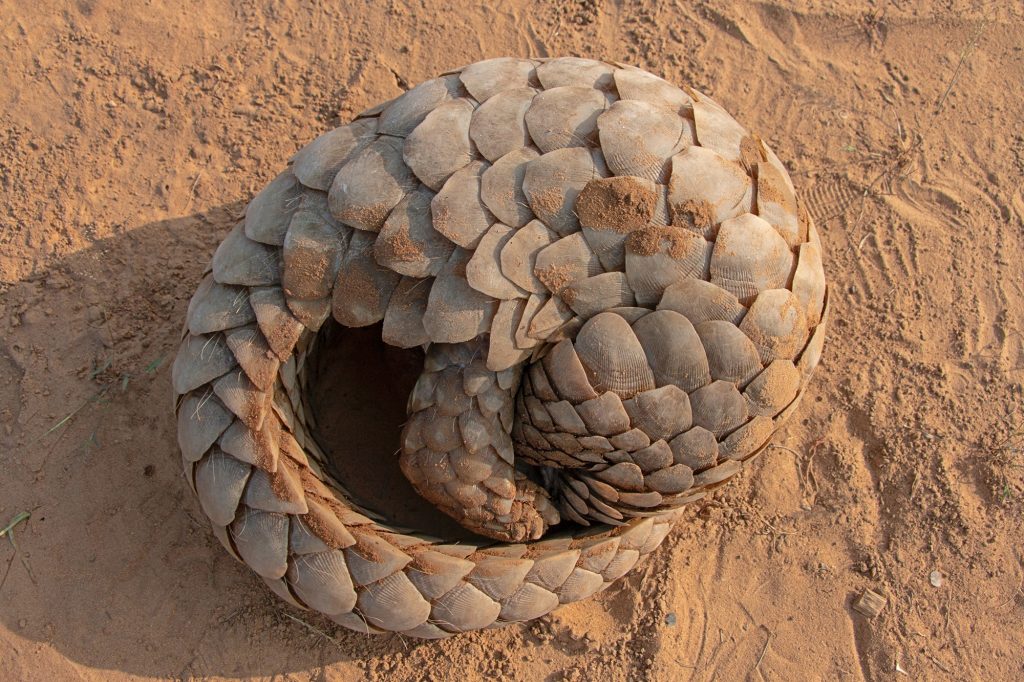
IMAGE ABOVE: Everything about pangolins is fascinating – they are so gentle and innocent, yet savagely decimated for no reason at all! | © Shutterstock
If you travel to countries where pangolins live and see anything suspicious, report it! Various organisations can carry out an investigation on your behalf. When I visited Vietnam, I went to a traditional medicine shop, pretending that a relative had breastmilk issues. My intention was to see whether the store would recommend pangolin powder. They were hesitant at first, but I requested a doctor’s appointment. Eventually, he showed me the powder, well hidden in a bag located in a cabinet hidden from the main room in the shop. I reported the shop to ENV. They investigated and noticed that it was the second time this shop was reported. It has now been closed down.
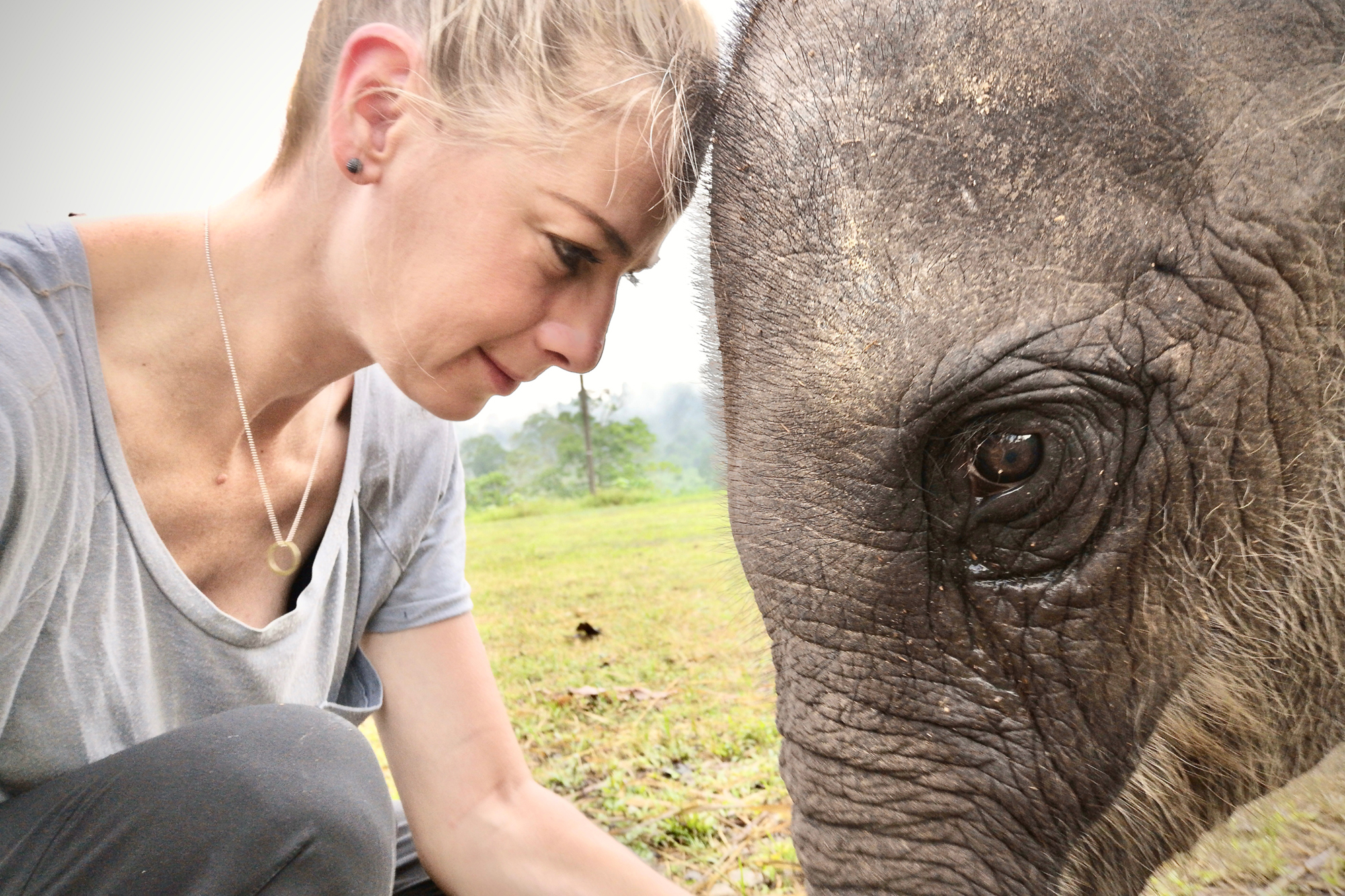
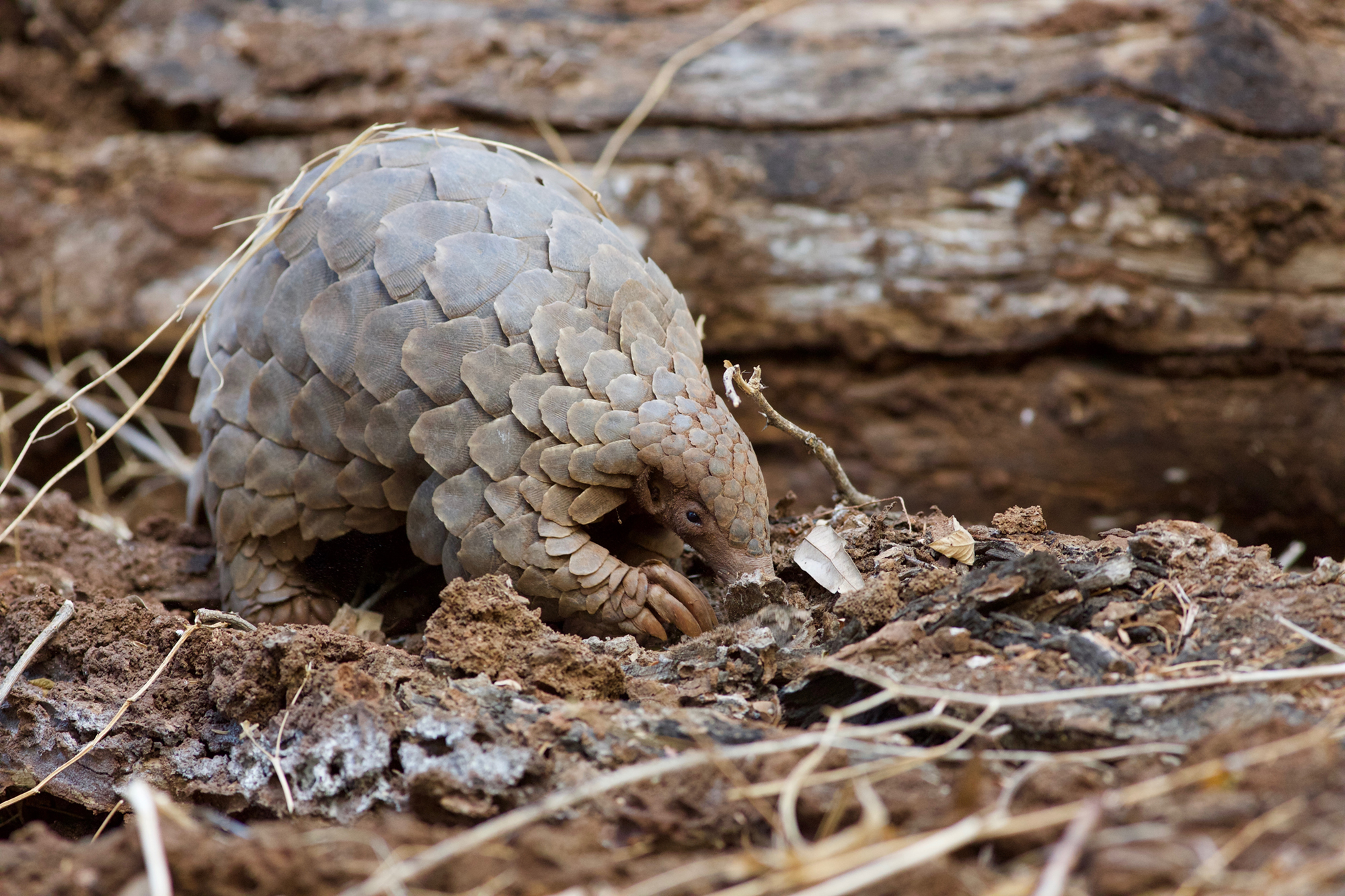
IMAGE LEFT: Founder of Wild & Free charity, Geraldine Morelli. | © Geraldine Morelli
IMAGE RIGHT: As the root of the issue is predominantly linked to Asian countries where international organisations have little impact, every bit helps to support those on the ground fighting for pangolins. | © Shutterstock
A Future for Pangolins
While I doubt we can change the beliefs of the current generation, I believe we can have a major impact on the next one. Therefore, efforts should be directed towards education, which has already been initiated. Hopefully, the Asian population will thereby realise that there is no need to kill these innocent animals, as well as all the others found on wet markets. In the meantime, we need to continue doing everything we can at our level to spread awareness and support local efforts.
Several good steps in the right direction have already been made. Thanks to COVID-19, in June 2020:
- China officially removed the pangolin scale from the 2020 edition of the Traditional Chinese Medicine Pharmacopoeia.
- China upgraded the national protection status of its native pangolin species, in particular the Chinese Pangolin Manis pentadactyla, to Class I, the highest form of protection under national legislation.
- China removed pangolin scales from the latest edition of the traditional medicine list, helping protect the world’s most trafficked mammal.
- Wild Aid & The Nature Conservancy joined efforts to create a campaign with Jackie Chan, which raises awareness to the Asian public. A similar campaign with Chinese basketball player Yao Ming proved very successful in reducing the demand for shark fins in the past.
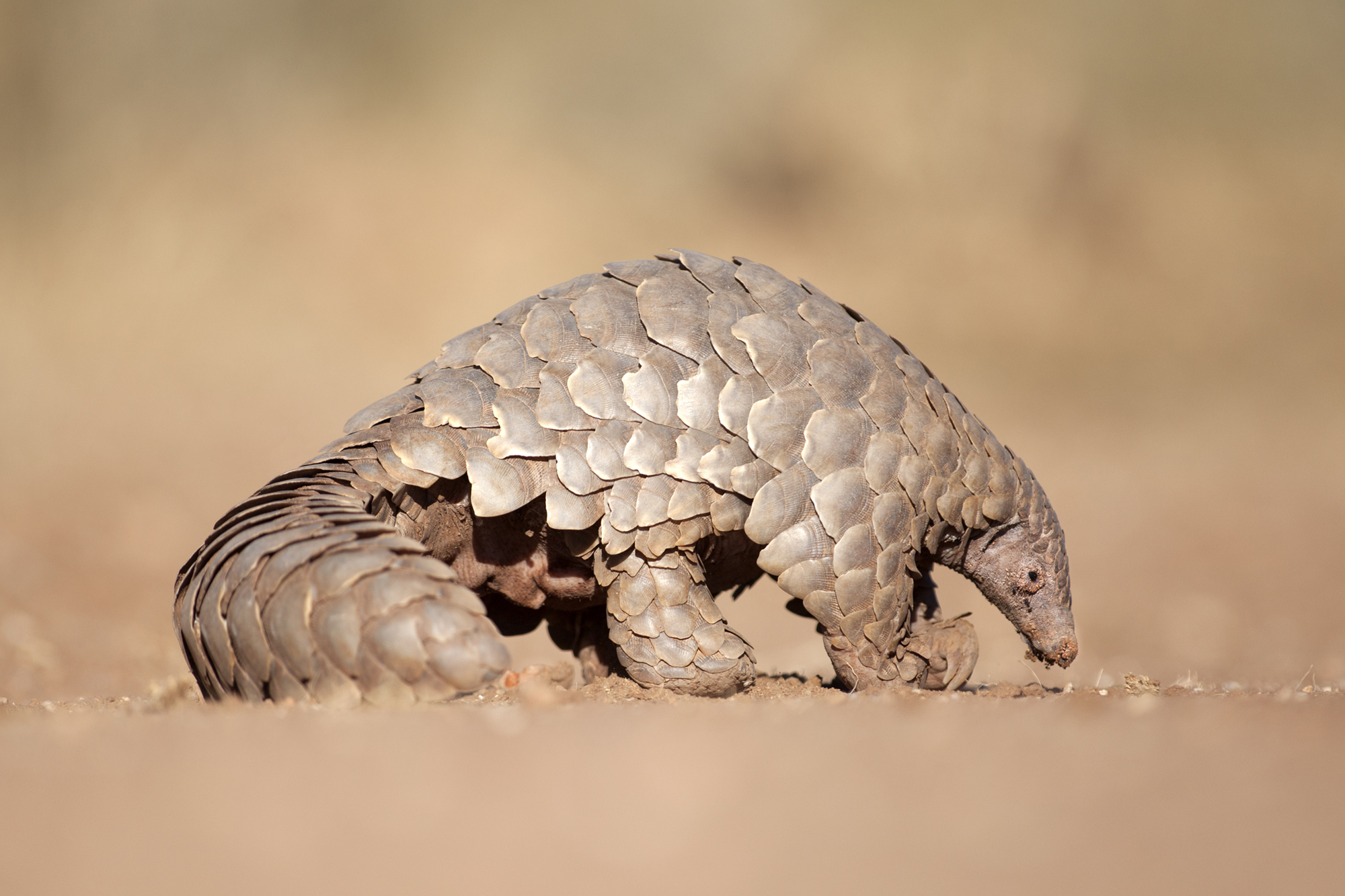
IMAGE ABOVE: If you travel to countries where pangolins live and see anything suspicious, report it! Various organisations can carry out an investigation on your behalf. | © Shutterstock
Current Projects for Wild & Free
In November 2020, I launched a new Wild & Free campaign called Save Elephants with Bees. This project is quite different from the previous ones I have been involved with, and very exciting to be part of!
In a nutshell, Save Elephants with Bees is a project in Tanzania tackling the human/wildlife conflict. Elephants break down National Park fences to feast on farmers’ crops. This puts farmers’ income sources in danger and leads to elephants being killed. A simple solution has proven to work wonders: installing beehives on the border of National Parks and farmers’ lands. When approaching the beehives, elephants are forced to turn back as the bees launch their attack. This saves both human and elephants lives, farmers’ crops, and provides a new source of income with honey.
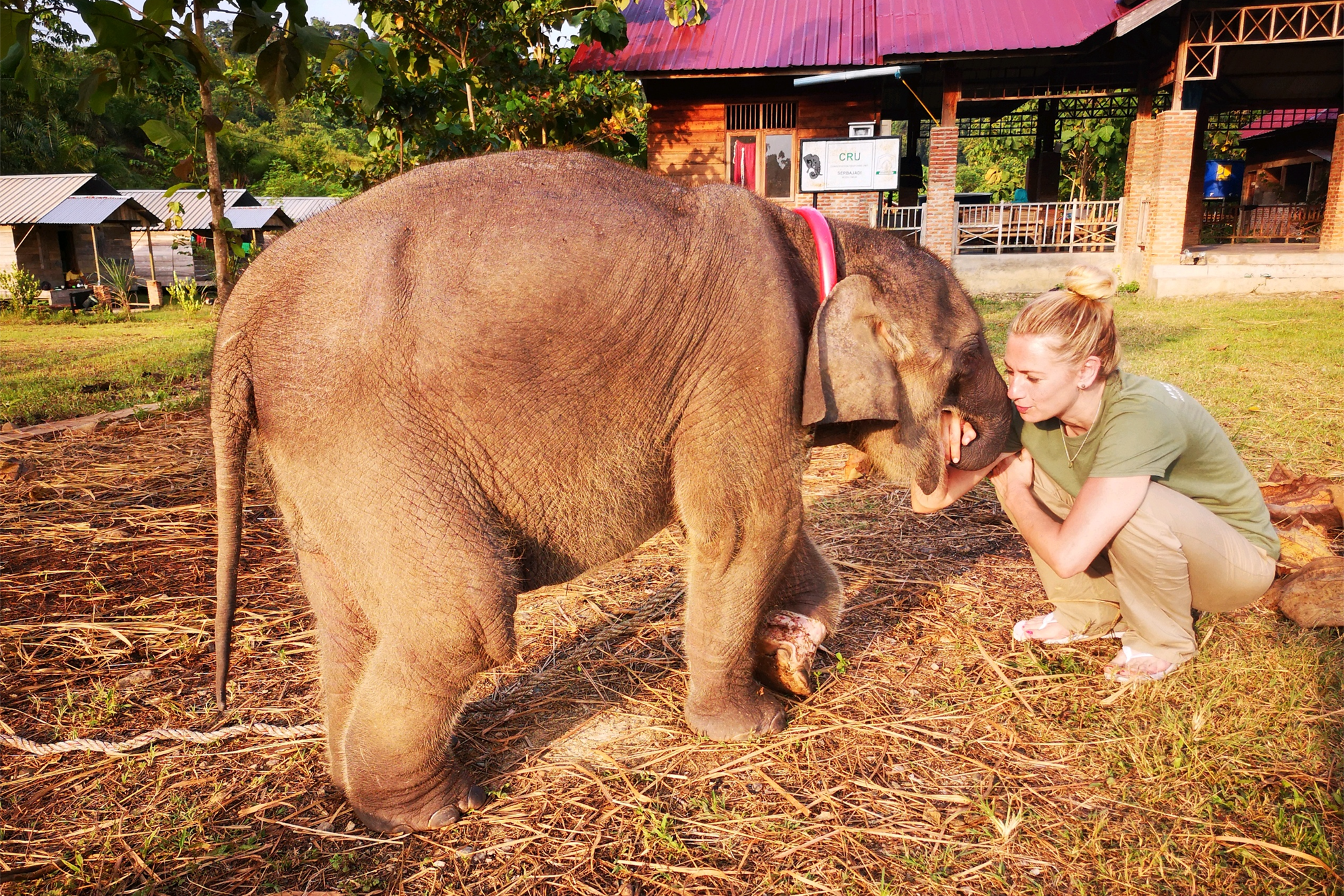
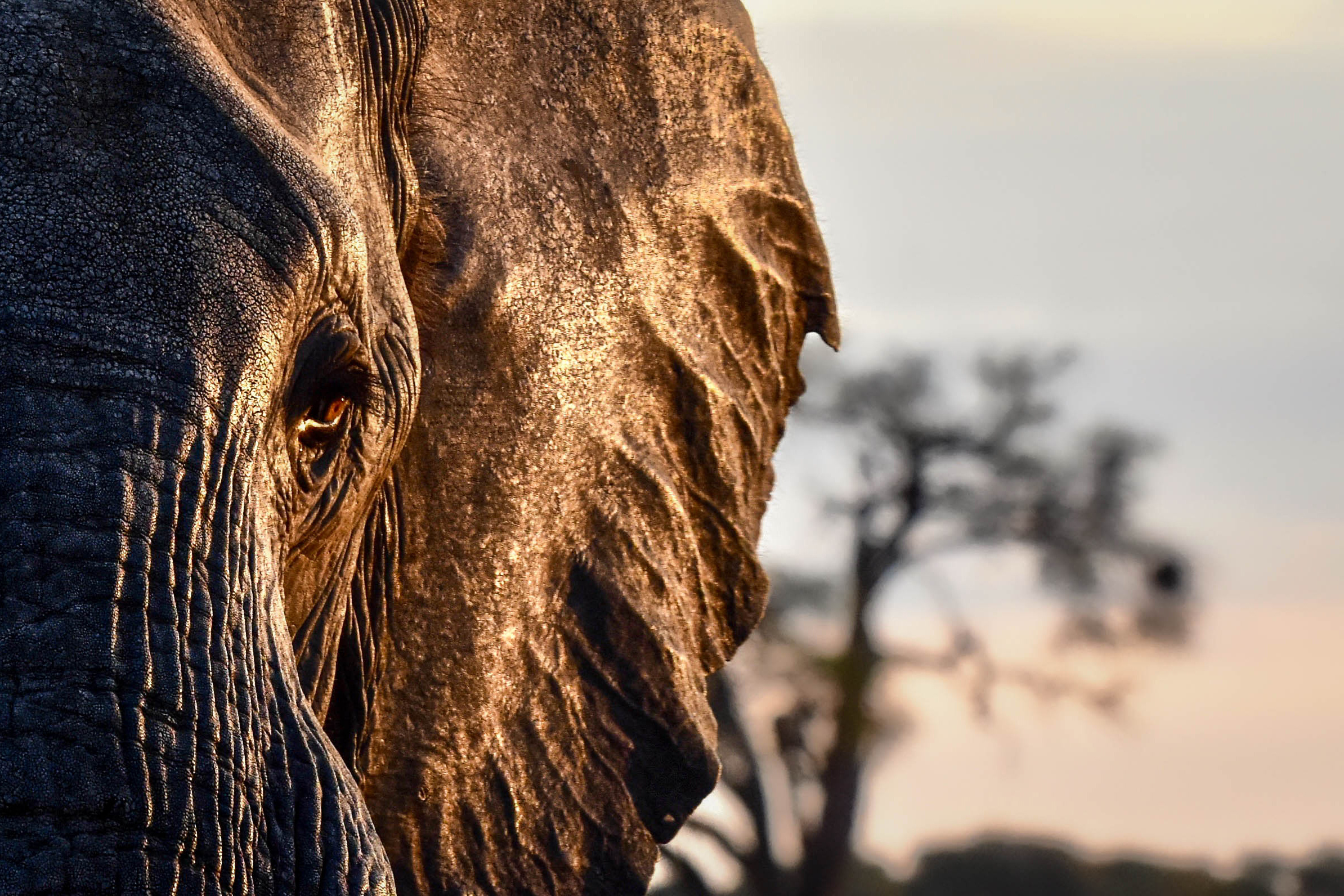
IMAGE LEFT: Geraldine comforts an orphaned baby elephant in Sumatra. | © Geraldine Morelli
IMAGE RIGHT: AFeWiS (which Wild & Free supports) creates natural barriers between elephants and farms by installing beehives. | © Geraldine Morelli
Currently, we have raised funds for 36 beehives to be installed in Arusha National Park. However, there will be more needed for other parks in Tanzania. It costs £55 to build and install a beehive. Donors’ names are written on the beehives, which is a lovely reward.
Besides my work with Wild & Free, I am also a travel agent specialised in African safaris. On behalf of my clients, I am offering to sponsor a beehive when they book a safari to Tanzania with me. Of course, they can go and see the project firsthand during their on their trip as well.
Follow Wild & Free – Rehabilitation and Release
Support Wild & Free by buying merchandise, on GiveAsYouLive, or via Smile Amazon.
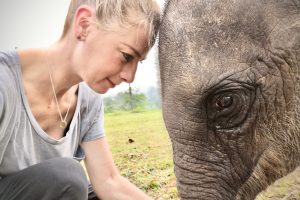
Written by
Geraldine Morelli
Geraldine Morelli is a wildlife photographer, conservationist and founder of the Wild & Free - Rehabilitation and Release charity, which supports projects for animal rescue, rehabilitation and release. Through grant support, fundraising and education, she has advanced wildlife conservation on an international scale.
Based in the United Kingdom | www.wildnfree.org

Edited by
Lana Tannir
Lana Tannir is the founder and editor-in-chief of Creatives for Conservation. A professional landscape and wildlife filmmaker and photographer, she specializes in nature conservation and animal welfare projects. Through her stories, she strives to promote global change by raising awareness, advancing education and inspiring people to act.
Based in Germany | www.lana-tannir.com
Join the Journey
Subscribe to receive more stories about nature and wildlife conservation.
Discover Our Stories
Explore more inspiring stories written by our creative conservationists.
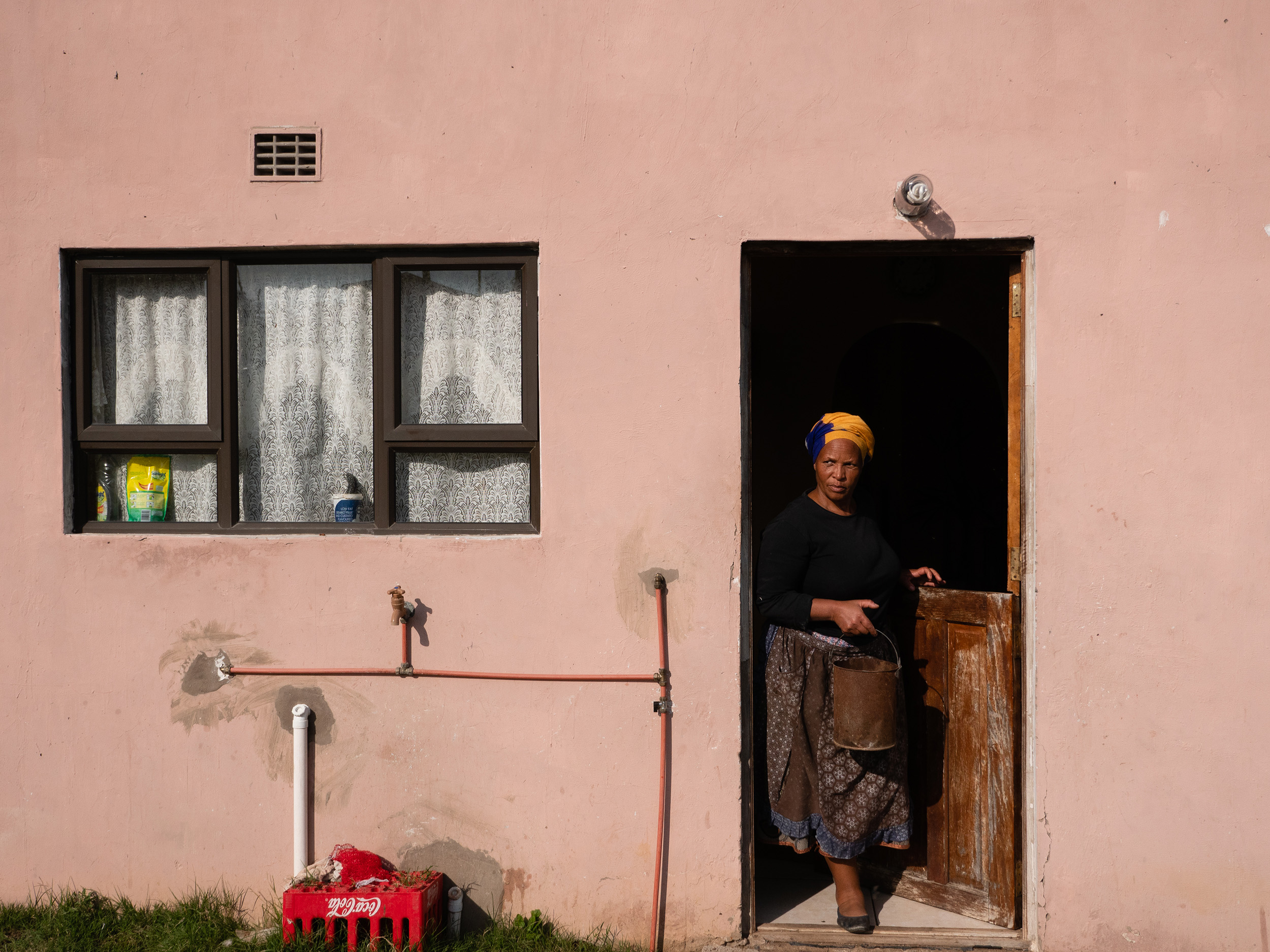
Seeds of Hope: Rural Women’s Assembly
The Rural Women’s Assembly links rural women together in a network all-over southern Africa. The aim is to advocate for them on a political level and train them in various fields. With the introduction of GMOs to South African farming, RWA has been an advocate for local farmer support, fair treatments and going back to local traditions of seed banks and agroecological techniques. Photographer Reto Steffen explores this initiative.
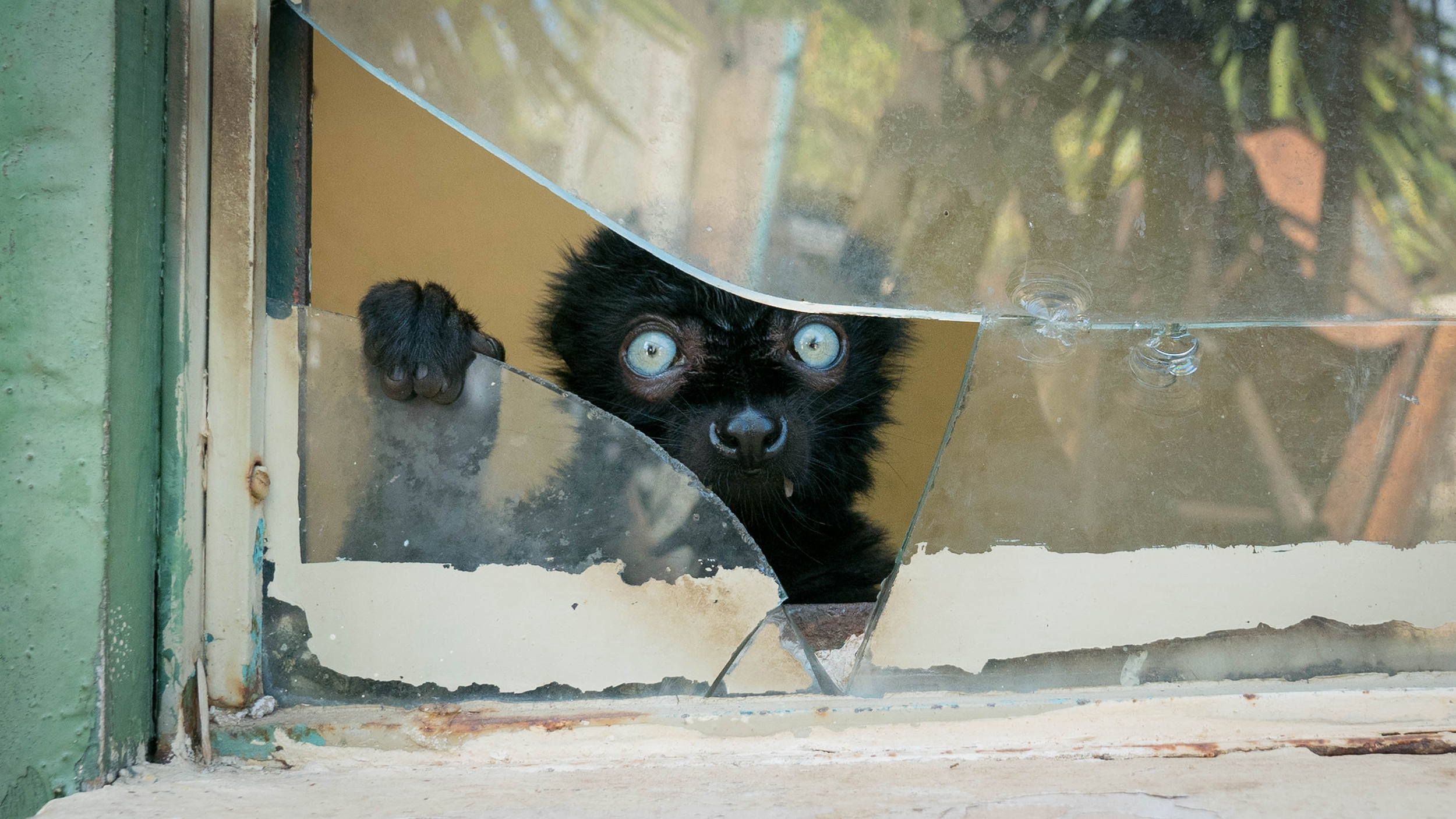
The Mad Dogs of Madagascar
Recent findings have determined that 90% of Madagascar’s lemurs are endangered. Besides forest degradation, the population is also affected by non-native, invasive predators. Dogs and cats enter the forests in search of food, thereby damaging the fauna and killing endangered wildlife. Conservation photographer Patricia Seaton unveils an innovative project by Mad Dog Initiative, which strives to resolve this issue.
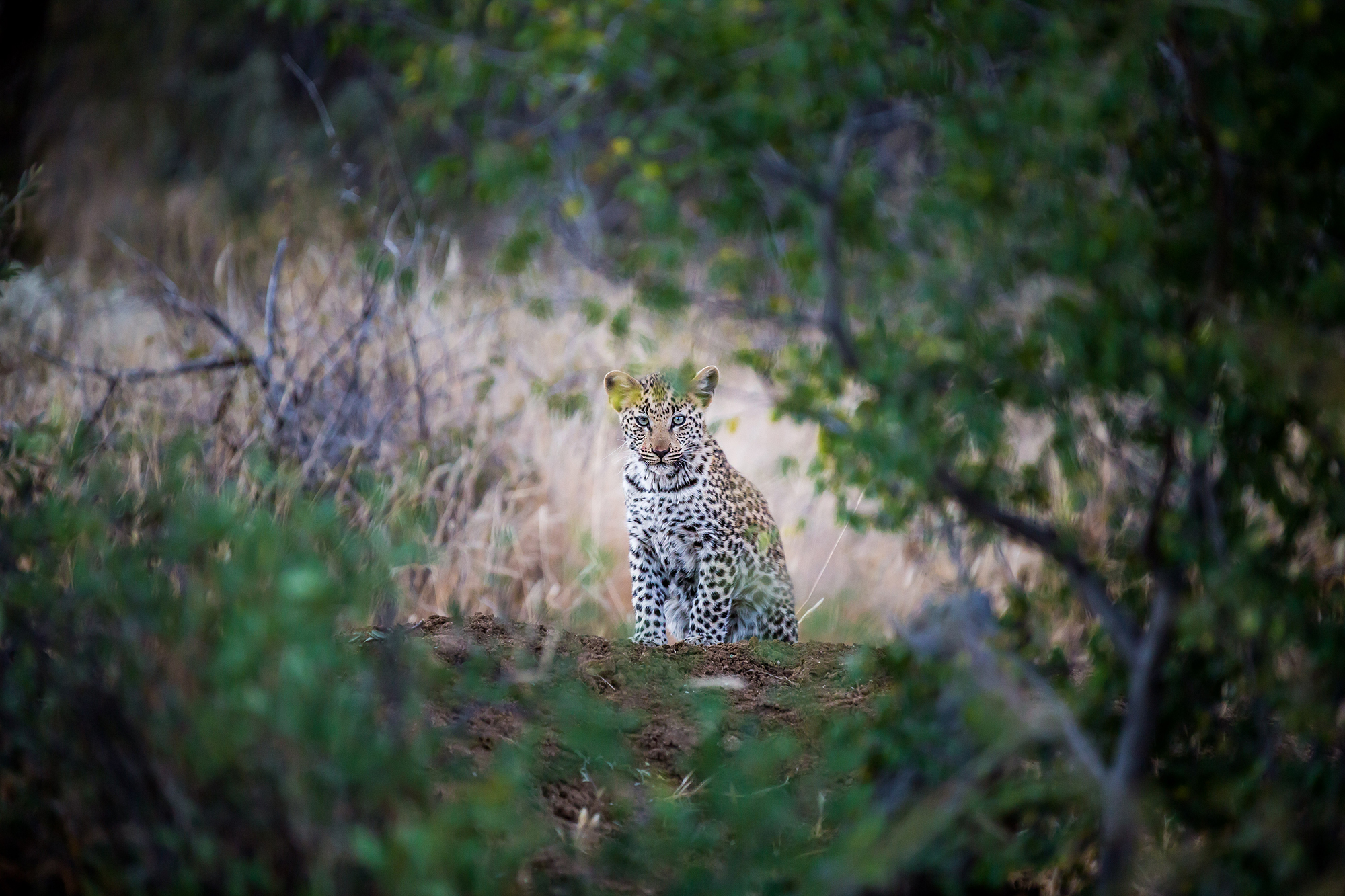
Wildlife Conservation in Namibia
The majority of African species are under threat of extinction. The human-wildlife conflict, illegal poaching and trafficking, as well as lack of education are just some of the causes. Nature photographer, Romain Charrier explores the challenges of big cat conservation, as he embarks on a journey to Namibia in collaboration with the AfriCat Foundation.
